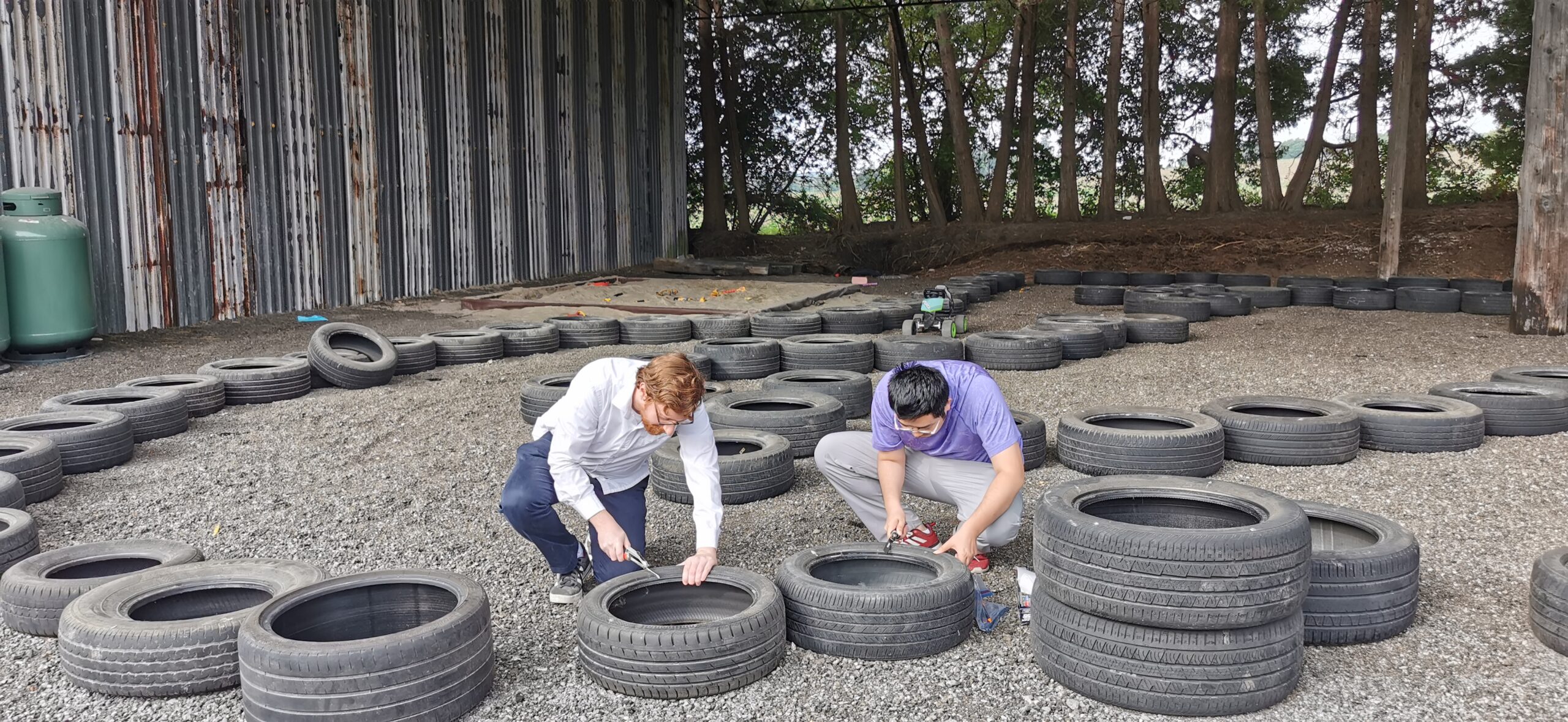With support from the Ontario Water Consortium’s Water Industry Growth Program, A.U.G. Signals is addressing the impact of toxic tire chemicals in waterways by adapting their proven TRITON system
As vehicles drive along, their tires shed particles of rubber and plastic tire. Typically, they’re tiny. But with more than a billion cars in the world, it adds up to a whole lot of pollution that washes off roads and into rivers, lakes and oceans every time it rains.
Globally, an estimated six million tonnes of tire wear particles are released into the environment each year.
For more than 50 years, manufacturers have been adding this antioxidant to tires to prevent them from cracking. Initial testing suggested the additive was safe. But in 2020, new research revealed that it can interact with ground-level ozone — a common form of air pollution — to create a chemical called 6PPD-quinone (6PPD-Q).
That’s a gap that A.U.G. Signals aims to address, with support from OWC’s Water Industry Growth program.
Building on proven solutions
A.U.G. Signals already has a proven system for assessing water quality. “We use the UV-vis spectroscopy system to monitor what’s dissolved in water,” says Christine Juan Tao, a product manager and research engineer at the Toronto-based company.
She explains how different contaminants absorb different wavelengths of light. By measuring those wavelengths, A.U.G.’s TRITON system can determine the levels of specific pollutants. And by combining that technology with automation and machine learning, TRITON provides real-time information about drinking water, wastewater and water in the environment.
TRITON can track everything from heavy metals to pesticides. Since its launch in 2011, it’s been deployed around the world, including Europe, China and 20 remote Indigenous communities in Canada.
Now, A.U.G. Signals is adapting it to detect 6PPD-Q. To do that, they’re teaming up with environmental chemist Hui Peng at the University of Toronto. Together, they aim to create a portable, cost-effective sensor that could continuously monitor 6PPD-Q levels in runoff.
Clearing technical hurdles
In theory, the chemical they’re targeting should be relatively easy to pick out amongst the plethora of other pollutants. “The majority of things dissolved in water will be 200 to 300 nanometres,” Tao explains. “[But] 6PPD-Q has a very specific absorption wavelength of 400 nanometres.”
The problem is that the concentrations will be very low. To address that issue, they’re working with Dr. Peng to introduce a new component for TRITON: a solid phase extraction column that will capture contaminants from the water sample. Once those contaminants are extracted with solvents, they can be analyzed using A.U.G.’s existing spectroscopy system.
Another challenge to tackle is the issue of micro-bubbles. As water passes through the narrow tubing of the spectroscopy unit, bubbles can form that interfere with the readings. That’s why Tao and her colleagues are currently experimenting with different “de-bubblers,” as well as optimizing the design of the system to reduce the risk of bubbles forming in the first place.
Tao is pleased with the progress they’ve made since launching the WIG project in July. “We are currently at the stage of prototype development,” she says. “It’s going so far pretty good.”
By the time the project wraps up in March 2024, their system will be ready for the next phase of development: automating the detection, sample mixing and other processes to make the technology as powerful and user-friendly as possible.
Staying one step ahead
Given the significant environmental harm 6PPD-Q can cause, Tao expects to see regulations banning it in the near future. By developing this sensor now, A.U.G. Signals will have a tool ready that scientists and government authorities can use to track levels of the contaminant and assess the impact of any regulations.
Developing new technology like this isn’t easy, says Tao, citing the funding and expertise required to turn concepts into market-ready products. That’s why A.U.G. Signals has regularly turned to OWC for support.
Over the years, funding from the Consortium has helped the company develop a real-time nutrient analyzer for lakes and rivers; sophisticated sensors for tracking potential carcinogens in drinking water; and a water monitoring system for remote First Nations in northern Ontario.
The results of those projects have allowed the company to stay on the leading edge of innovation. “We cannot rely on just the one product,” says Tao. “We have to always be ahead of the new technologies and to explore more.”
And thanks to WIG funding, detecting toxic tire chemicals is just the latest example.
WIG supports industry innovations that accelerate growth, create jobs and strengthen Ontario’s water sector. For more information, click here.
OWC’s Innovation Showcase aims to highlight cutting-edge advancements and breakthrough technologies of Southern Ontario companies that address the pressing challenges and opportunities in the water sector – View A.U.G. Signals’ Showcase


